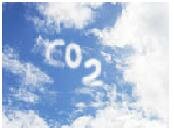Don’t Lose Interest in Climate Change but take part in International Day of Climate Action
Tuesday, October 20th, 2009According to dire news reported in the media last week Australians are losing interest in Global Warming. While in 2007 this issue was ranked as the equal most important foreign policy goal for the Federal Government the most recent polls indicate that out of ten possible goals it is in seventh place. Now fewer people see Global Warming as a threat to Australia’s national interests and it is perceived as the fourth most critical threat facing us out of twelve possibilities.
The fact that the current government was delaying action and the fact that the opposition party still hasn’t resolved its position on emission trading and the global financial crises have all been blamed for the loss of interest in Climate Change. The good news is that 76% of those surveyed in the annual Lowy Institute Poll still rated Climate Change as a problem and want some action. See full article here: (http://www.theage.com.au/environment/global-warming-drops-down-list-20091012-gu1w.html)
For those who still think that we should do something about Climate Change, this weekend is an important day. This Saturday on the 24th of October it is the ‘International Day of Climate Action’. This is an international movement and people from many countries around the world will join in some form of protest to send a message to government leaders around the world. The message is clear: people want action on Climate Change. It is expected that thousands of images of people gathering in many cities and remote areas will be projected to the UN Headquarters and to Times Square.
The aim of this action -organised by www.350.org worldwide- is to focus the attention on the science and the citizens to remind world leaders that they need to take physical reality into account when they are making decisions about our collective future at the Copenhagen Climate Change Conference in December. People are not interested in backroom business deals and political interest groups but in one united goal; that is to reduce greenhouse emission and to ensure that the CO2 remains below 350 ppm in the atmosphere. Saturday’s campaign is expected to be the most widespread day of environmental action in the planet’s history with over 3000 events in 160 countries. 350.org will assemble all the photos for a gigantic, global visual petition and present to the UN before the conference.
If you want to get involved visit this website for nearest location: www.350.org/map#/map/-25.274398/133.775136/4





